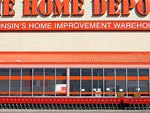Student Loan Bubble Eerily Similar To Subprime Mortgage Debacle
Billions in high-interest loans being handed out to people who probably shouldn’t qualify for them, who may not understand the full terms of the loans, and who will likely have trouble paying the money back. Sounds a lot like the stories we were writing five years ago as mountains of subprime, adjustable rate mortgages were coming due, but now it’s about the massive number of student loans written in recent years.
The Consumer Financial Protection Bureau released a thorough report on the huge private student loan market and confirmed what many of us have believed — that there is a huge danger to the economy by runaway student lending in the last decade.
In 2001, lenders handed out less than $5 billion in private student loans in the U.S. By 2008, that had swollen to more than $20 billion, as lenders began marketing and disbursing the loans directly to student borrowers.
Between 2005 and 2007, the CFPB says the percentage of undergraduate student loans made without the involvement of the school jumped from 40% to 70%.
“As a result, many students borrowed more than they needed to finance their education,” writes the CFPB. “Additionally, during this period, lenders were more likely to originate loans to borrowers with lower credit scores than they had previously been. These trends made private student loans riskier for consumers.”
The report also found that a number of the students who borrowed these private loans did not fully understand the difference between private and federal student loans. Many did not exhaust all of their options through the lower-interest federal Stafford loans, while some borrowers were not aware that private student loans often have fewer repayment options that federal loans.
And even though the private student loan market has shrunk back to only $6 billion in 2011, the damage is done for the millions of Americans who borrowed during the peak period, many of whom graduated or left school at the height of an unfriendly job market.
“In 2009, the unemployment rate for private student loan borrowers who started school in the 2003-2004 academic year was 16%,” writes the CFPB. “Ten percent of recent graduates of four-year colleges have monthly payments for all education loans in excess of 25% of their income. Default rates have spiked significantly since the financial crisis of 2008. Cumulative defaults on private student loans exceed $8 billion, and represent over 850,000 distinct loans.”
“Subprime-style lending went to college, and now students are paying the price,” said Education Secretary Arne Duncan, who has asked Congress to require colleges and private lenders work with the Department of Education and the
CFPB to figure out ways to offer flexibility and relief to private student loan borrowers who are experiencing financial distress.
You can check out the full, 131-page PDF of the report at ConsumerFinance.gov.
Want more consumer news? Visit our parent organization, Consumer Reports, for the latest on scams, recalls, and other consumer issues.


